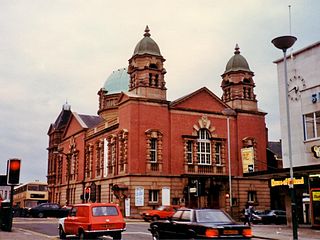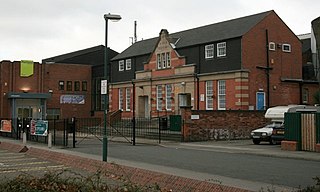


Arthur Brown M.Inst. C.E. (21 November 1851 - 13 April 1935) [1] was City Engineer for Nottingham, England from 1880 [2] to 1919.



Arthur Brown M.Inst. C.E. (21 November 1851 - 13 April 1935) [1] was City Engineer for Nottingham, England from 1880 [2] to 1919.
He was born on 21 November 1851 in Nottingham, the son of George Hutchinson Brown a Nottingham merchant. He was educated at Nottingham Grammar School.
On 13 March 1877 at All Saints' Church, Nottingham he married Caroline Goodwin (1854-1919), only daughter of T.A. Goodwin of Nottingham, and they had the following children:
For many years he lived in Glenthorne, Lucknow Avenue, Nottingham. He died on 13 April 1935 and left an estate valued at £43,626 (equivalent to £3,221,900in 2021). [4]
He was articled to the Borough Engineer Marriott Ogle Tarbotton becoming Assistant Borough Engineer in 1874, and succeeded to the role himself in 1880. He retired in 1919. [5]

Nottingham Corporation Tramways was formed when Nottingham Corporation took over the Nottingham and District Tramways Company Limited, which had operated a horse and steam tram service from 1877.

Watson Fothergill was a British architect who designed over 100 unique buildings in Nottingham in the East Midlands of England, his influences were mainly from the Gothic Revival and Old English vernacular architecture styles.
Thomas Cecil Howitt, OBE was a British provincial architect of the 20th Century. Howitt is chiefly remembered for designing prominent public buildings, such as the Council House and Processional Way in Nottingham, Baskerville House in Birmingham, Newport Civic Centre, and several Odeon cinemas. Howitt's chief architectural legacies are in his home city of Nottingham. He was Housing Architect for the City Council, designing municipal housing estates which are often considered to be among the finest in terms of planning in the country.


St Peter's Church, Radford is an Anglican parish church in Radford, Nottingham, located at 171 Hartley Road. It is a Grade II listed building as being of special architectural or historic interest.

Frederick Ball LRIBA was an architect based in Nottingham. He was Sheriff of Nottingham from 1906–07, and Mayor of Nottingham from 1913–1914.

Lieutenant-Colonel Arthur William Lancelot Brewill was an architect based in Nottingham.
Sir Albert Ball was Mayor of Nottingham and Lord Mayor of Nottingham, and the father of the famous Great War air ace Captain Albert Ball (1896–1917), a recipient of the Victoria Cross.

Arthur George Marshall ARIBA was an architect based in Nottingham from 1881.

Samuel Dutton Walker F.S.A. was an architect based in Nottingham.

Robert Evans FRIBA, JP was an English architect based in Nottingham.

William Jolley was an English architect based in Nottingham.

William Beedham Starr JP was an architect based in Nottingham.

Lawrence Bright was an architect based in Nottingham.

Frank Beckett Lewis ARIBA was an English architect based in Nottingham.

Arthur Dale LRIBA (1859-1931) was an English architect based in Nottingham.
Ernest Reginald Ridgway was an English architect based in Long Eaton.

Lieut-Colonel Herbert Walker FRIBA, M Inst CE, FSI, was an architect, surveyor and civil engineer based in Nottingham from 1870 to 1923.

Lenton railway station was situated on the Midland Railway line on Derby Road in Lenton, Nottingham, England.

The Nottingham Corporation Electricity Department was responsible for the production and supply of electricity in Nottingham, England, from 1894 to 1948.